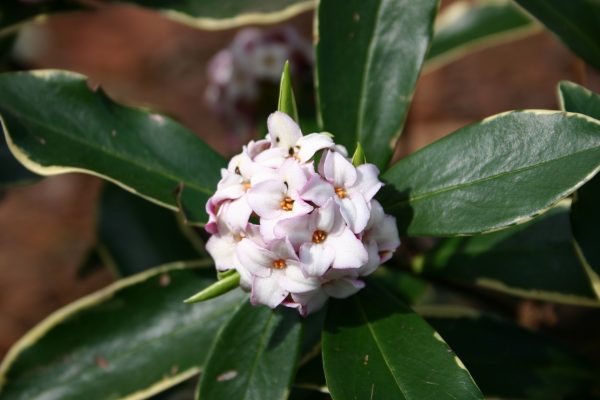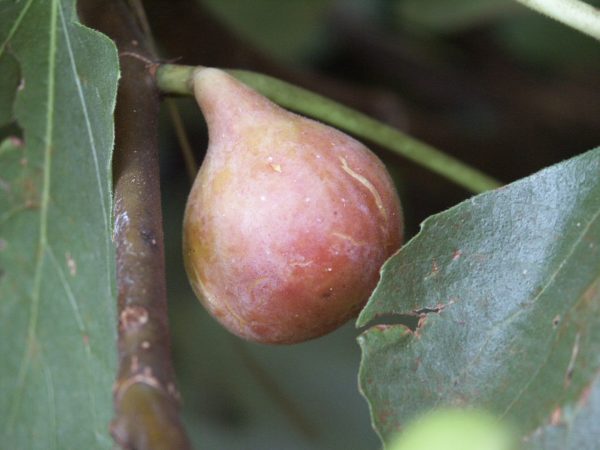Daphne – Special Soil

The smell from the daphne shrubs growing near my front door has been intoxicating this year. I have two there, in front of three small gardenias, assuring my family of a perfumed entry each day for months.
I have three more beside the driveway, combined with hellebores, Italian arum and hosta.
Did I start with five plants? No, I’ve planted eight daphnes in my landscape over the last ten years… but only these five have prospered. This mimics the experiences of many gardeners who have coveted having a daphne. “Buy four to keep two” seems to be the prevailing motto.
I know exactly why my three failed. I simply did not take the time to prepare the soil properly for their requirements. I was lulled by early success with daphne and that caused me to let my guard down. Last spring I scattered a bit of soil conditioner over their planting spot, mixed it in half-heartedly and plopped the now-departed daphnes into place. By mid-summer they looked peaked. By last October, they were vertical compost.
When you have a special plant like a daphne or azalea or rhododendron, how can you be assured of providing them with the best possible soil?
SOIL EQUALS SUCCESS I have twelve raised beds in my back yard and I can tell immediately which ones received the most attention when I built them initially. Bigger tomatoes, taller flowers, healthier transplants emerge from the beds I took the time to till and amend correctly. A bed in the rear has soil that more resembles native clay. A yellowing rhododendron and a few clumps of ajuga are all that have survived there.
High-value plants deserve the best soil. They deserve a root environment that truly approaches the horticultural ideal seen over and over in garden catalogs: “Requires moist but well-drained soil”.
I planted a sixth (ninth) daphne last week, resolving not to let it die from poor soil preparation. I know daphne demands good drainage around its roots so I mixed up a special soil to fill the hole I dug to receive it.
SPECIAL SOIL RECIPE Into a wheelbarrow I dumped a five gallon bucket of clay, which I’d shoveled up from the projected planting spot, discarding the rest. To this I added two buckets of soil conditioner. On top I poured a seventy-pound bag of Quikrete All-Purpose Sand (you can also use Pavestone Paver Leveling Sand). With vigorous huffing and puffing, I mixed the three ingredients together thoroughly, much more thoroughly that I might have done for less-exacting plants.
The result? A gritty, organic, fast-draining soil that would be the pride of any plant needing a permanent home. Knowing that daphnes don’t care for acid soil, I added a half-cup of garden lime as I worked. The coup de grace was a quarter-cup of 0-46-0 to provide phosphorus to the newly elongating roots. The soil looked and smelled good enough to sprinkle over ice cream!
I won’t bore you with the rest of the planting process. I untangled roots, set the daphne at the same height at which it had been growing and mulched under it with pine straw afterwards. You already know how to do that. I’m already anticipating an even richer smell from the front of my landscape next year.
PERFECT SOIL? Nope, gardening is never perfect. It’s just a journey towards an ideal – whether the perfect plant, the perfect design, the perfect environment or the perfect soil.
My mother fed her five kids oatmeal every day for breakfast, knowing she couldn’t give us an ideal house or an ideal family or an ideal education. She could, however, give us something that would “stick to our ribs” as we individually marched toward our own ideals. If you can’t provide the best for every part of your landscape, the soil mix I’ve described will at least keep your plants happy as they struggle.

daphne flower













